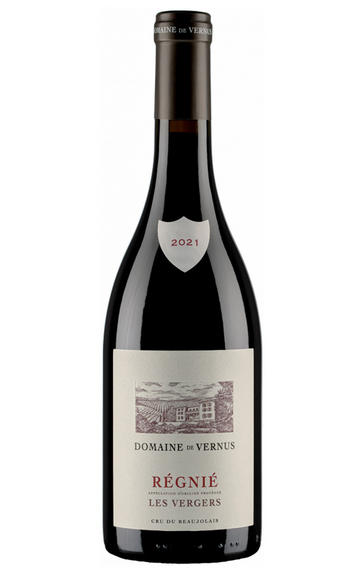
2021 Régnié, Les Vergers, Domaine de Vernus, Beaujolais
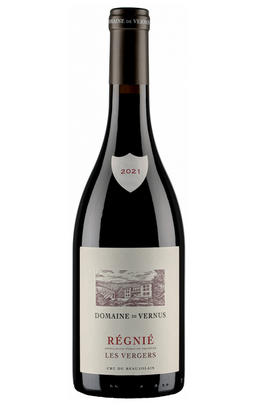
Critics reviews
For a 2021 this is brimming with sour cherry fruit, plus herbal and savory complexity. Fascinating interplay of fresh and ripe elements on the concentrated and lively medium-bodied palate. Long crisp finish with wet stone minerality. Only the third vintage from this new producer! Sustainable. Drink or hold.
Stuart Pigott, Senior Editor for JamesSuckling.com (March 2023)
About this WINE
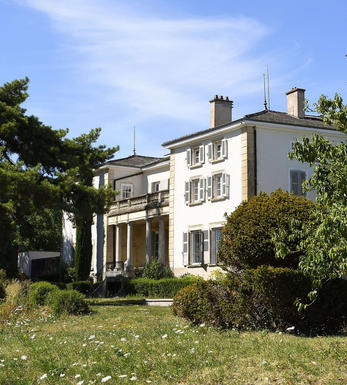
Domaine de Vernus
The Domaine de Vernus is a new estate created in 2019, and owned by Frédéric Jametton, an ex-insurance broker. The estate is in the heart of the vineyards of the Régnié-Durette municipality. The property is steeped in history and is located on the heights near the Cadole and Vergers plots. It has a panoramic view of Mont Brouilly and the hilly Beaujolais countryside.
Domaine de Vernus is run by famous consultant winemaker, Guillaume Rouget, son of Emmanuel Rouget. Producing red, mostly Crus, from their 12 hectares of vines and a sustainable approach to viticulture.
The philosophy of Domaine de Vernus is right out of the Burgundian playbook: Seek out small plots of old goblet vines within the finest Crus, eschew chemicals, restore soil health, and harvest at lower yields. In the winery, they destem depending on the character of the vintage, ferment in stainless steel, and then mature the wines in Burgundian oak barrels.
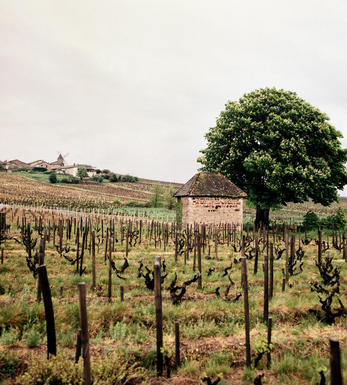
Beaujolais
The Beaujolais region occupies 22,000ha between Mâcon and Lyon, and spans 34 miles from north to south. Around 70 million litres of Beaujolais are produced each year, or two-and-a-half times the entire red and white wine production of the rest of Burgundy put together. More than half of this is sold as Beaujolais Nouveau, and released on the third Thursday of November following each harvest.
Beaujolais is almost exclusively planted with the Gamay grape, and produces mostly red wines. A small amount of white Beaujolais is produced from Chardonnay (or Aligoté) while a handful of Beaujolais rosés can also be found.
It is one of life's injustices that this beautiful wine region is forever associated in most people's minds with Beaujolais Nouveau, a thin and dilute wine that has more to do with marketing than actual substance. However, there is an Aladdin's trove of gloriously satisfying wines to be found amongst the 10 named village crus that form the spiritual home of the fresh, fruity Gamay grape.
From north to south, St Amour, Juliénas, Moulin-à-Vent, Chénas, Fleurie, Chiroubles, Morgon, Régnié (a cru since 1988), Brouilly, and Côte de Brouilly are situated along the 15-mile strip of granite hills to the north of the region. They range from light, lively, and fragrant to rich and velvety. While most Beaujolais should be drunk as soon as possible, the crus are infinitely more concentrated and have much more personality. They can be kept for up to 10 years, at which age the best examples resemble mature Pinot Noir.
At its best, simple Beaujolais is fruity and eminently drinkable, especially when lightly-chilled in summer. Most Beaujolais displays a pear-drop edge to its soft red fruit, and often notes of banana and bubble gum too. These traits come largely from the vinification method (semi-carbonic maceration) rather than the Gamay grape itself, where a swift fermentation highlights the aromatics and fruit, while minimizing the tannins. Amongst the top crus, however, there has been a return to more traditional Burgundian vinification methods, and even oak ageing.
There are five classifications of Beaujolais: Beaujolais Nouveau, Beaujolais, Beaujolais Supérieur, Beaujolais Villages, and the 10 Beaujolais crus. As with the rest of Burgundy, the producer's name on the bottle is often the most important factor.
Recommended producers: Michel Chignard, Jean-Claude Desvignes, Olivier Merlin, Alain Michaud.
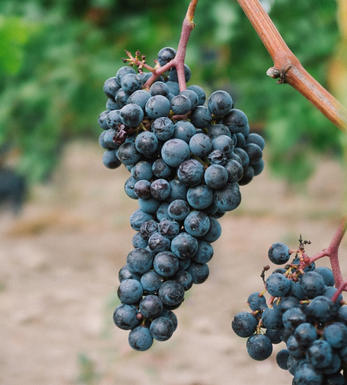
Gamay
A French variety planted predominately in Beaujolais where it is the grape behind everything from light and often acidic Beaujolais Nouveau through to the more serious and well-structured wines from the 10 cru villages. It takes its name from a hamlet just outside Chassagne-Montrachet and was at one stage widely planted on the Côte d`Or. However it was gradually phased out due to its poor yield and supposed poor quality of its wines.
The majority of Gamay wines in Beaujolais are labelled as Beaujolais or Beaujolais-Villages and are deliciously juicy, easy drinking, gulpable wines. Of more interest are the Cru wines from the 10 villages in the north of the region where the soil is predominantly granitic schist and where the vines are planted on gently undulating slopes. These can be well-structured, intensely perfumed wines, redolent of ripe black fruits and, while delicious young, will reward medium term cellaring.
Gamay is also grown in the Touraine region of the Loire where it produces soft, well-balanced, gluggable wines for drinking young.


Buying options
Add to wishlist
Description
For a 2021 this is brimming with sour cherry fruit, plus herbal and savory complexity. Fascinating interplay of fresh and ripe elements on the concentrated and lively medium-bodied palate. Long crisp finish with wet stone minerality. Only the third vintage from this new producer! Sustainable. Drink or hold.
Stuart Pigott, Senior Editor for JamesSuckling.com (March 2023)
wine at a glance
Delivery and quality guarantee